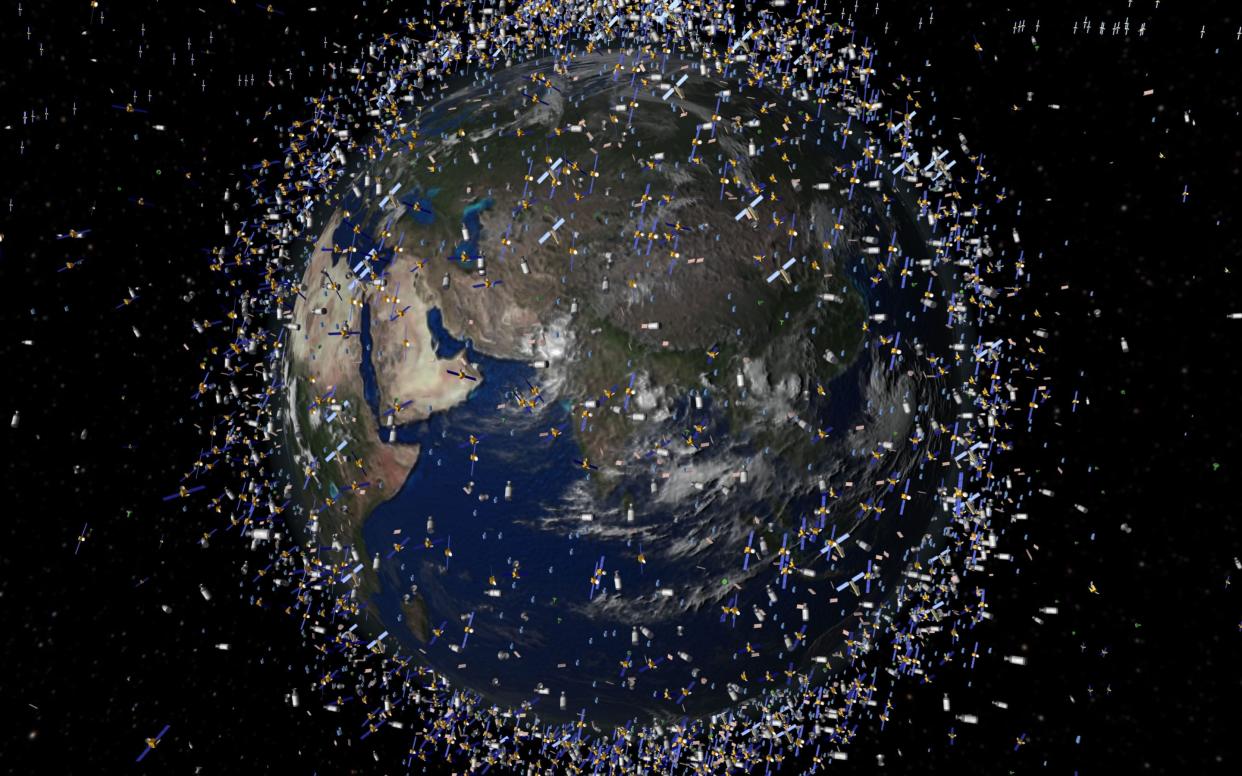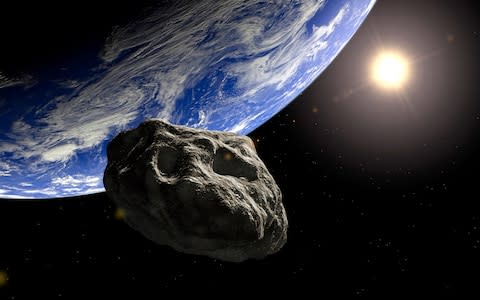'Dead satellites' pose danger to humans, warns European Space Agency

Thousands of ‘dead’ satellites are floating in space and pose a ‘very big danger’ to humanity, the head of the European Space Agency (Esa) has warned.
Speaking at the agency's ministerial council in Seville, Jan Worner said that of almost 4,500 satellites in orbit, only 1,500 are active.
Space scientists are concerned that defunct satellites could hit other satellites or the International Space Station (ISS), which would then cause more debris, setting off a catastrophic chain reaction that could wipe out telecommunications systems - a phenomenon known as Kessler Syndrome.
The Esa is currently working on a number of programmes to remove defunct satellites and companies such as Airbus have been developing new technologies such as space harpoons and nets in Stevenage, Hertfordshire.
“We have the space debris, from upper stages, from adapters, from old satellites,” Mr Worner delegates.
“We have about something like 4,500 satellites in orbit - only 1,500 are active, meaning 3,000 are dead. A very big danger.
“And therefore we are proposing a mission where we bring down some ESA-owned asset which is still flying around the Earth.
“And at the same time with the same mission we would also demonstrate that it's possible to avoid future space debris by doing also some direct de-orbiting.”

Mr Worner also warned that missions were needed to practice destroying or deflecting meteorites.
“We have a situation of meteorites - the dinosaurs died out because of a meteorite, most probably,” he said.
“We don't want to be dying out because of a meteorite, and therefore we should have a look to that.
“And to make two things - to have observations to have early pre-warning, but at the same time... to really fight against it, to have what I call 'playing billiards in space', and together with the Americans, we are proposing a mission in that.”
Ministers are meeting in Seville to decide which space missions to find over the next few years.
Speaking at the opening session of the meeting, Mr Worner also restated plans for a joint Mars Sample Return mission with Nasa which would see a rover collect surface material from the Red Planet.
“And then a European mission will go there, get this container and bring it back to the Earth,” he added.
The head of the UK Space Agency Graham Turnock, said the UK will continue to play a ‘full part’ in the Esa after Brexit.
Britain is hoping to be part of the new Lunar Gateway, a space station which will provide a stepping stone between the Moon and Earth.
"The UK is fully supportive of ESA's work to evolve and usher in a new era of space where we continue to push the boundaries of the possible, engage in new and emerging markets and remain at the forefront of cutting edge science, technology, and innovation,” he said.
Earlier this year Dr Alice Bunn, international director at the UK Space Agency, said that despite the uncertainty surrounding Brexit she is sure the UK will have a role to play in the meeting.
She said she would like the UK to come away from the meeting with some of the key technologies that play into the global exploration system sufficiently resourced.
Dr Bunn also said she wanted the UK's scientific priorities realised through the agreement of a global roadmap towards its next exploration efforts.

 Yahoo News
Yahoo News 
